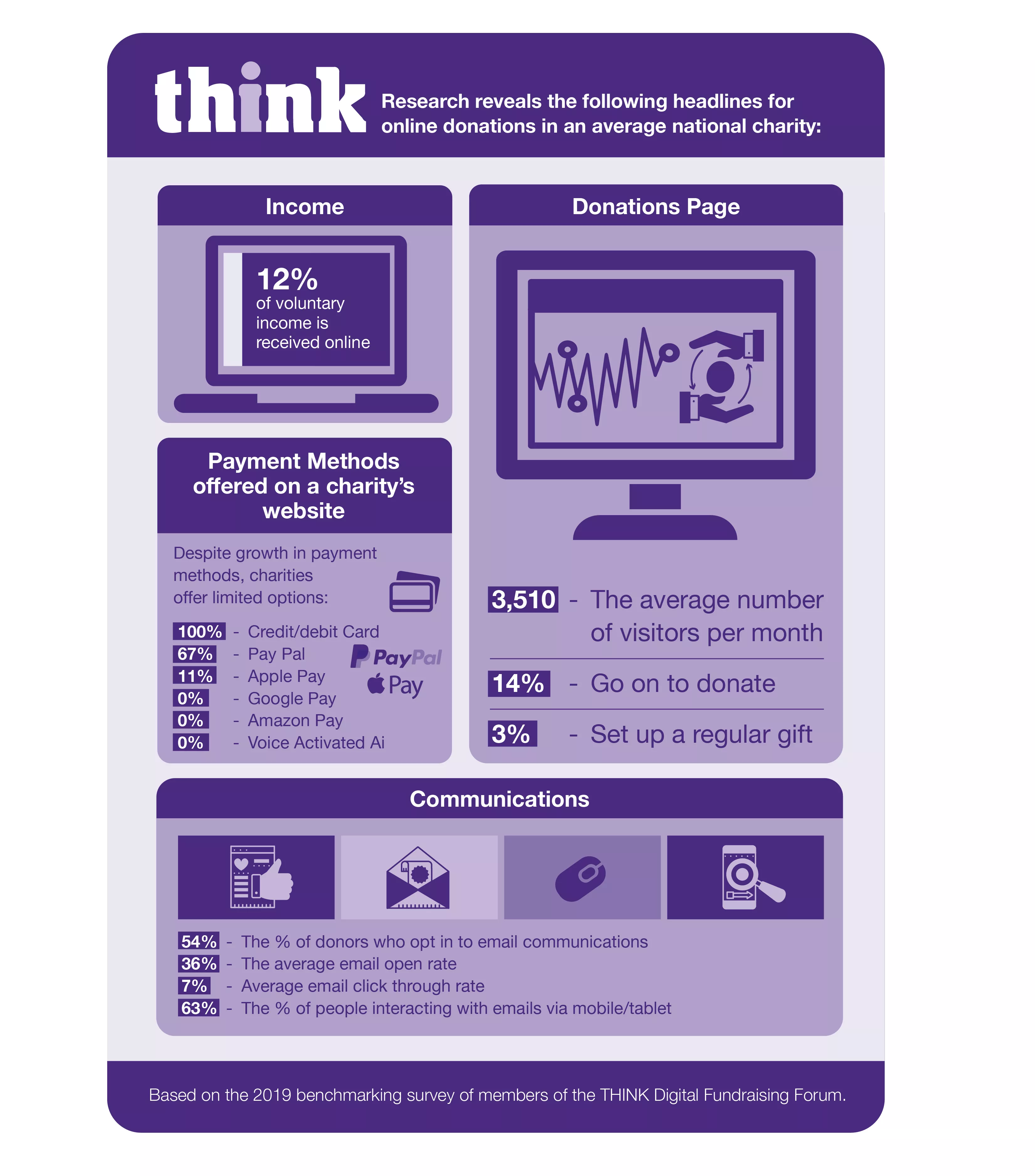Our next challenge – embracing a truly digital society?
Is it just me or is the world literally all around us becoming more digital? Cash is declining in use, online shopping continues to grow, self-service (in particular instore) is becoming the norm and tools such as live-chat are replacing the need to speak to people.
These environmental developments change consumer behaviour which ultimately has consequences for our sector.
Last year I wrote in a blog that many charities in the drive to deliver the very best donor experience had recognised these changes and had embarked on a digital transformation programme. One year on the members of THINK’s Digital Forum have participated in a benchmarking study to look at payment methods offered by (UK-wide) charities.

Infographic of THINK Digital Fundraising Forum‘s benchmark survey 2019
Income
Our benchmarking exercise found that 12% of voluntary income was received via online sources. On average, we found that 3,510 people visited the donation page every month but only 14% went onto give a single gift and 3% set up a regular gift which poses the very simple question of ‘why’. Why did so many people visit the donate page and then not and what could be done to change this?
Payment methods
All charities who participated provided, as you would expect, the option to donate via credit or debit card. Interestingly, just 67% offered PayPal and just 11% could accept Apple Pay.
At a recent meeting of the THINK Digital Forum a guest speaker from Barclays, who presented on changing payment methods and their implications for charities, mentioned that there are over 80 different payment methods available now! This benchmarking study shows that charities are able to offer an incredibly limited amount and crucially many are not offering the simple, streamlined, options that people are becoming accustom to.
Advertisement
Communications
Just over half, 54%, of people who donated via the charity’s website opted into receiving communications going forward. Why are people who are giving a gift saying no to communications? Is it due to the way the options are presented or how they are described?
Delving into emails found 63% of the people interacting with them did so via a mobile/table, that the average open rate was 36% and an average click through rate was 7%.
With the majority of emails being received on mobiles now, and presumably whilst people are on the move, content and the time they are sent are critical. I read some research on how to market to millennials recently which cited that average attention span was 8-15 seconds so marketing efforts need to be short and sweet.
The future
Almost every charity will be looking for ways to increase income. This benchmarking exercise suggests with some changes charities could be raising significantly more.
To reach this potentially low hanging fruit a change in approach is needed. Environmental changes need to be recognised and acted on quicker (Apple Pay was launched in the UK in summer 2015), segmentation with relevant content and, crucially, and an iterative, test and learn approach will all be needed.
Gary Kernahan. THINK’s Digital Forum provides the unique opportunity for ongoing learning and peer-support via three Forum meetings a year, exclusive research and a private discussion group.
To find out more and join contact Gary by emailing ga**********@th*****.org.




